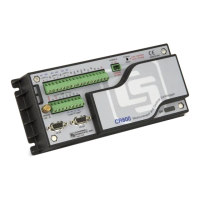Section 8. Operation
279
When the CR800 reverses differential inputs or excitation polarity, it delays the
same settling time after the reversal as it does before the first measurement. So,
there are two delays per channel when either RevDiff or RevEx is used. If both
RevDiff and RevEx are True, four measurements are performed; positive and
negative excitations with the inputs one way and positive and negative excitations
with the inputs reversed. To illustrate,
1. the CR800 switches to the channel
2. sets the excitation, settles, measures,
3. reverses the excitation, settles, measures,
4. reverses the excitation, reverses the inputs, settles, measures,
5. reverses the excitation, settles, measures.
There are four delays per channel measured. The CR800 processes the four sub-
measurements into a single reported value. In cases of excitation reversal,
excitation "on time" for each polarity is exactly the same to ensure that ionic
sensors do not polarize with repetitive measurements.
Read More! A white paper entitled "The Benefits of Input Reversal and
Excitation Reversal for Voltage Measurements" is available at
www.campbellsci.com.
8.1.2.6.2 Ground Reference Offset Voltage
When MeasOff is enabled (= True), the CR800 measures the offset voltage of the
ground reference prior to each VoltSe() or TCSe() measurement. This offset
voltage is subtracted from the subsequent measurement.
8.1.2.6.3 Background Calibration
If RevDiff, RevEx, or MeasOff is disabled (= False) in a measurement instruction,
offset voltage compensation is still performed, albeit less effectively, by using
measurements from automatic background calibration. Disabling RevDiff, RevEx,
or MeasOff speeds up measurement time; however, the increase in speed comes at
the cost of accuracy 1) because RevDiff, RevEx, and MeasOff are more effective
techniques, and 2) because background calibrations are performed only
periodically, so more time skew occurs between the background calibration
offsets and the measurements to which they are applied.
Note Disable RevDiff, RevEx, and MeasOff when CR800 module temperature and
return currents are slow to change or when measurement duration must be
minimal to maximize measurement frequency.
8.1.2.7 Integration
Read More! See White Paper "Preventing and Attacking Measurement Noise
Problems" at www.campbellsci.com.
The CR800 incorporates circuitry to perform an analog integration on voltages to
be measured prior to the A/D conversion. The magnitude of the frequency
response of an analog integrator is a SIN(x) / x shape, which has notches
(transmission zeros) occurring at 1 / (integer multiples) of the integration

